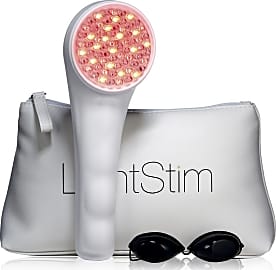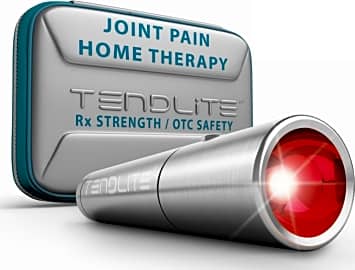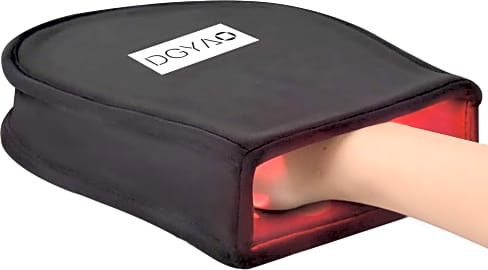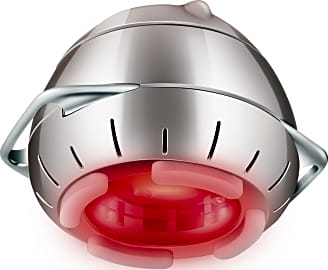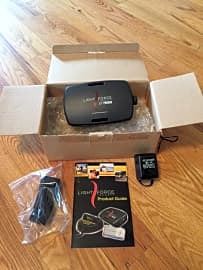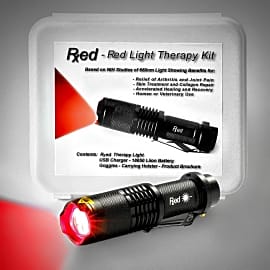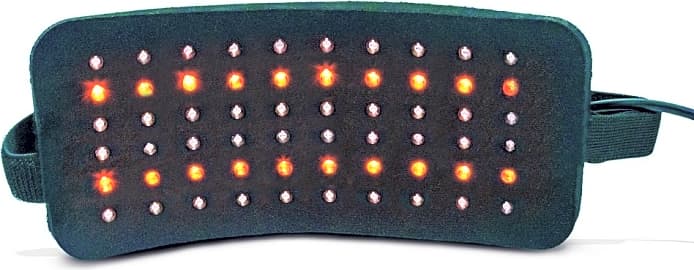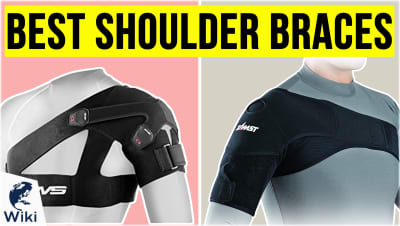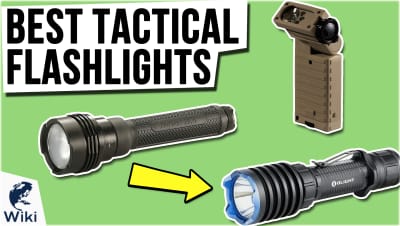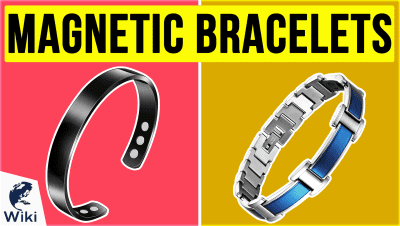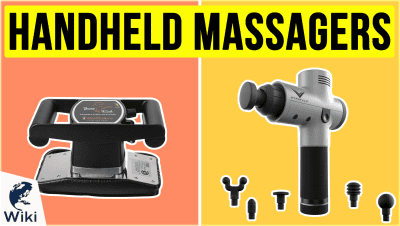The 10 Best LED Pain Relievers

This wiki has been updated 43 times since it was first published in September of 2015. If you prefer not to take the pharmaceutical route to managing issues with joints or muscles, you might want to try one of these LED pain relievers instead. Using a combination of wavelengths from the visible and infrared light spectrum, they claim to be effective for relieving many conditions, including arthritis, without the risk of potentially harmful side effects. When users buy our independently chosen editorial selections, we may earn commissions to help fund the Wiki.
Editor's Notes
June 24, 2020:
Right out of the gate, we should say that there's little more than anecdotal evidence that these technologies can genuinely make a dent in someone's pain management plan, and that I'm neither a doctor nor a holistic healer. If you're seriously considering using one of these products, you should speak to your physician first, and decide how best to integrate one into your course of treatment.
You'll see a variety of claims regarding efficacy of certain wavelengths, specifically 660 and 88 nanometers, which translate to visible red and invisible infrared light. Both wavelengths are available on several combination models like the Tuoyr Red Light Wrap and the LightStim LST-003. The idea is that these lights have penetrative effects on the body in ways that other wavelengths do not, and that penetration can stimulate circulation to an afflicted area, which may reduce inflammation and marginally increase rates of healing various tissues. At the end of the day, if it means the difference between a two-month healing process and a 58-day healing process, it might be worth it, especially if you're throwing everything you can at a given problem with the intent get out of that brace and return to work or a sport as soon as possible.
You might also see claims like "FDA-Cleared," which, to be completely clear, only means that a product has been evaluated on the basis of its similarity to previously cleared products, which in turn have only been evaluated against previously cleared products, and so on and so forth until you get to a single FDA-approved device from which all other clearances have emanated. It's needlessly confusing and ultimately a meaningless designation, so when you see it on something like the DPL FlexPad, it's best to take it with a grain of salt.
Special Honors
Red Therapy Rush Light 360 This model is powerful enough that it doesn't need to be applied directly over an afflicted area; you simply need to be as close to it as is comfortable. It's vented to keep it from overheating, but the most convenient thing about it is that it can be controlled by a simple smartphone app, allowing you to easily dial in the treatment you're looking for, whether you want to address pain issues or beauty concerns. The downside is that it's one of the most expensive choices out there. redtherapy.co
Can Light Therapy Really Reduce Pain?
The placebo group started out with an average pain rating of 7.4, which fell to a six by the end of the study — a 19 percent decrease in pain.
Applying something as simple as an array of LED lights to a painful spot on the body and actually feeling relief may seem too good to be true. Hucksters and snake oil salesmen throughout history have made wild claims about the abilities of their products — often wild medical claims — that have left the majority of us extremely suspicious of their true intentions.
It would be easy to write off LED light therapy as just another hippy dippy holistic treatment that provides little more than a placebo effect to its users. If I’m being entirely honest, when I initially set out to research the topic, I expected to find a litany of articles debunking the claims made by manufacturers about LED efficacy. What I found was the opposite.
One study, for example, published through the National Institutes of Health, asked patients with at least six years spent suffering lower back pain to undergo LED treatment in the infrared spectrum for a treatment course of seven weeks. Twenty-one patients received the real therapy, while 18 others received placebo treatment (the devices in the placebo group still lit up, but did not produce infrared radiation).
Patients were asked to rate their pain at the beginning and end of each treatment, as well as provide an overall assessment of their pain on a scale of one to ten on the first day and the last. The placebo group started out with an average pain rating of 7.4, which fell to a six by the end of the study — a 19 percent decrease in pain. Clearly, the placebo effect was present.
The treatment group, however, began the study with an average pain rating of 6.9. By the end of seven weeks, that rating dropped to a solid three. That’s nearly a 57 percent decrease in pain, or three times the relief experienced by the placebo group.
How Does Light Battle Pain?
For chronic pain sufferers, LED therapy can be very effective. On the sites of more acute pain, such as a broken bone, it may not provide enough palpable relief to be worth the investment. Breaks and sprains can often create lingering pain towards the end of the healing process, however, and that might be an ideal time to apply some light.
For chronic pain sufferers, LED therapy can be very effective.
How exactly light therapy can relieve pain is actually pretty interesting, and you probably already know the basics. Generally speaking, when you have an acute injury, it’s wise to apply ice on and off for the first 48 hours or so. This is to reduce inflammation by restricting blood flow. After that initial period, however, it’s often advisable to apply heat to the area in an effort to increase blood flow. During this stage, an increase in blood flow brings vital nutrients and other healing elements to the damaged tissue, speeding up your recovery and often reducing pain.
Now, if you’ve ever held your hand up to a powerful flashlight, you’ve probably noticed that some of the light actually penetrates your hand, usually around the thinner parts of the fingers. Certain wavelengths of light can travel through physical barriers better than others, though, and infrared light is especially capable of penetrating human tissue.
When a powerful enough source of infrared radiation is applied to the body, it can penetrate to the site of an old injury or a chronic pain and provide the same kind of relief that heat therapy does.
LEDs are particularly useful for this application because they can be tuned to emit pretty specific frequencies of light. They also have a tremendous shelf life, so they’re liable to be the last thing to break down over the many years you own and use your light therapy device.
Some models come with lights housed in wands and other configurations designed to let you target a very specific area. If you’re into the heat phase of a more acute injury, these are ideal, as they consolidate their diodes and increase the effectiveness on a smaller area of the body.
Other models target larger areas, spreading out the diodes inside wraps and other devices that make it easy to adhere the unit to the body. These are ideal for chronic muscle pains, as users can strap them on, fire them up, and let the healing commence. Ultimately, there’s no reason not to own both styles if you find the therapy effective.
A Brief History Of Energy Treatments
LED light therapy is a recent addition to a long line of practical healing applications of energy that reach back millennia. From as far back as the 28th century B.C.E., electric eels provided shock treatments to target pain. Lodestones were also popular for their magnetic properties, and offshoots of this treatment can still be seen in magnetic bracelets and insoles.
Deciding to go down the route of LED light therapy likely means that you’re more open to other holistic means of treatment, and there are plenty of great options out there.
If you regularly go to the chiropractor, you may have been treated to some low-level electrical muscle stimulation. This can increase blood flow in an injured area, as well as stimulate muscles that are at risk of atrophy around a bad break or even a temporary or permanent paralysis.
Deciding to go down the route of LED light therapy likely means that you’re more open to other holistic means of treatment, and there are plenty of great options out there. To augment LED treatment, it’d be well worth investing in a few additional implements.
If space and budget are both concerns, a simple handheld massager can work wonders. They’re incredibly easy to use and their effectiveness is unquestionable. On the other end of the space and finance spectrum are inversion tables. Inversions are one of the healthiest groups of positions in yogic practice, good for everything from circulation to organ health. They can also be among the most difficult and dangerous positions for new or rusty practitioners. Inversion tables can bring you into an inverted state without the risk or the learning curve associated with yoga.


